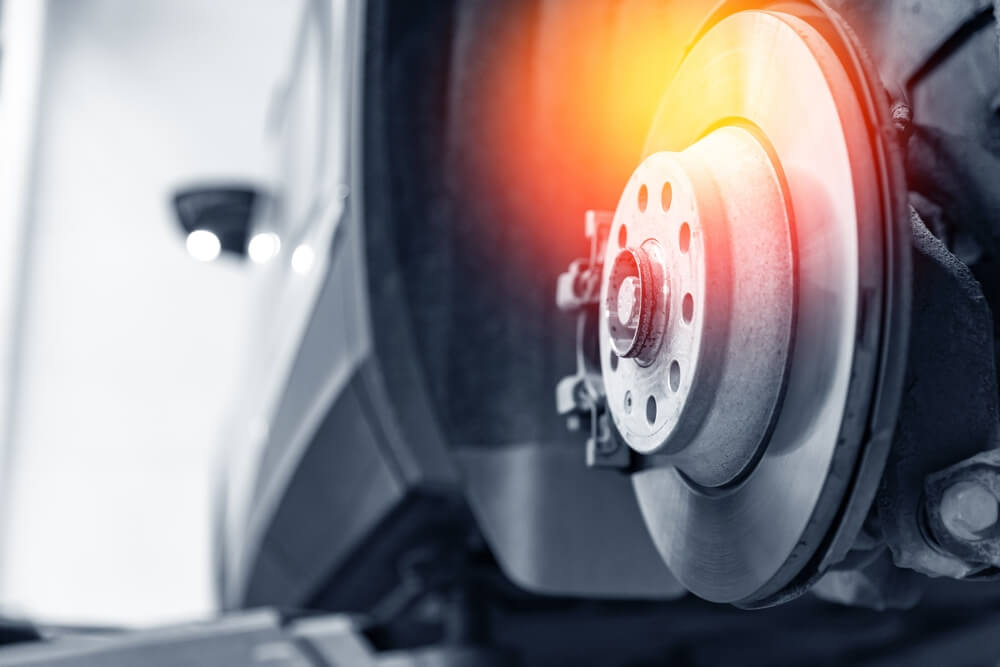Find Auto Parts Ocean and Transmissions for a Great Price! Live Assistant For Auto Parts Ocean Call 1-833-374-5813

When it comes to the brake system, it is of primary importance to monitor it closely. They are the first ones that will stop the car in case of an emergency; a running car can only be stopped with the brakes. Thus, the system is required to be kept in good condition. One of the major components of this system is the brake pads. In this blog, we will be looking at the drill with which you can easily check your brake pads.
Before looking at how to check brake pads, let us first look at the role of these components. This will ensure you can link the signals to the damaged components.
Generates friction: When brakes are applied, hydraulic pressure is exerted on the brake pads, which makes them clamp down on the brake drums or rotors. This results in friction, which slows down the car and thereby stops it.
Heat dissipation: On application of brakes, the kinetic energy gets converted into heat energy. The role played by the brake pads here is to dissipate this heat into the air; otherwise, overheating can result in loss of effectiveness of brakes.
Noise dampening: To reduce squeaking or squealing sounds during braking, certain brake pads have noise-reducing components. This equipment makes for a calmer and more relaxing driving experience.
Wear resistance: The brake pads used in an automobile are made of such a material that they can endure heat generated and the wear caused by constant braking. While this is true, after a certain time, they wear down and therefore need constant inspection.
Smooth and consistent braking: By maintaining an even degree of friction on the rotor or drum, brake pads provide steady, smooth braking. The performance of the brakes must be consistent to be reliable and secure.
Here are the steps to follow to check brake pads.
Safety is the priority: Before starting your work, ensure that your car is parked safely on a flat surface. Also, make sure that you are not weakening the safety gear.
Check the location: Use the manufacturer’s manual to understand where you will find the brake pads and the other brake components.
Lift up your car: For a check on brake pads, you’ll be required to remove the wheels. For this, you will be required to lift the car and use a jack to do so. Make sure that your car is well-balanced and that it’s safe to work on it.
Removal of the wheels: For the inspection of the brake pads, you will be required to remove the wheel covering the brake assembly.
Inspect the brake pads: after the removal of the brake assembly cover, it is time for you to inspect the brake pads. Note their thickness, signs for wear, and any other signal that the brake pads are not in the best condition. This step will help you understand if it’s time for brake pad replacement or if there is some other component that is giving you trouble while driving.
Look at the rotors: take a moment to examine the brake rotors after examining the brake pads. Keep an eye out for warping, scoring, or deep grooves. The rotors may need to be resurfaced or replaced if you experience any of these problems.
Reassemble: After you went through the checkup, it’s time for you to reassemble your car.
Test them: After assembling, take it for a drive to test the changes or repairs you made or got done.
In summary, brake pads are essential components of a car’s braking system because they create the friction needed to slow and stop a car safely while controlling heat and wear. To ensure the best braking performance and general vehicle safety, routine maintenance and prompt replacement of worn brake pads are required.
If you’re searching for great deals on high-quality secondhand engines and transmissions, we might be able to assist you. Visit our website for Auto Parts Ocean. for more information.